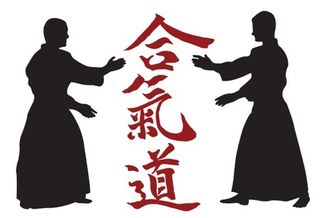Over the years, I have helped people develop several strategies for responding to psychological assault. Here are five.
1. Learning to Fight Back
Too many of us have been disempowered or silenced as a result of being bullied or abused by those who have more power, whether those are parents, bosses, people who are physically stronger, or groups with more social power. While that silence is clearly understandable, our psychological and even physical health may depend upon us learning to wield our power to fight back, especially by using our voice.
In the words of scholar and activist bell hooks, Ph.D., "[T]he strength and power that emerges from sustained resistance and the profound conviction that these forces can be healing, can protect us from dehumanization and despair.” [1]
It is often the case that people need to support their power, resistance, and voice until they feel free to fight back. Once they are free to fight back, they also become free to not fight — a true empowerment.
2. Running Away
Too often I have worked with people who say, “Isn’t it bad to walk away from family, from community, from friends, etc?” As a counselor, I have no preconceived judgment about this. Instead, I look to the person to see what their truth is — their deepest impulse. If a person dreams of running away, feels momentarily connected to flight animals (like horses), or if their body “feels like running” and is being restrained, I support them to distance themselves from the situation. Using my authority as a counselor to convince someone not to run away, is to stand against their nature and wisdom, potentially re-abusing them.
Being free to run away from people who hurt you is an important option and strategy. Many people think running away is avoiding difficulty; this is not always the case.
3. Making a Shield
I have had clients who literally become stiff when remembering the moment they were attacked (though they often try to loosen up because they believe their stiffness is a negative response). In these cases, I ask the person to feel their stiffness and allow their bodies to become even stiffer. Some end up describing themselves as a wall, others curl up into a tight ball, showing me only their backs — a protective shell-like posture.
Some people are more like turtles or rocks and can get hard under attack.These people do not profit from those who counsel them to remain soft or open in adversity. Instead, their shields need affirmation and validation.

4. Integrating The Essence of the Assault
This advanced strategy involves taking a homeopathic dose of the violence or integrating a core part of the energy of the assault itself. This may feel like a spark or a lightning quick capacity to react. This strategy helps people become more one with their attacker — it is more of a spiritual than psychological strategy.
Homeopathy is a branch of alternative medicine whose discipline is informed by the notion that “like cures like.” In other words, in order to heal you need a little dose of the “sickness” or pathogen. In the case of assault, you may need to ingest and digest a little bit of the energy of the assault to heal from assault.
The same philosophy can be found in certain shamanic traditions where the warrior can only successfully confront her antagonist (her ally) by becoming a little like that antagonist. For example, if you are attacked by a bear, you need to befriend the spirit of the bear or become more “bear-like” in order to be able to successfully contend with the bear (or those people or problems that are bear-like).
People who take to this strategy don't profit from those who counsel them to never be like those who hurt them.
5. Taking the Bullet
I remember consulting to the president of a corporation who was accused of not listening to his employees. It was true — his ears were too often closed to their input. I suggested a meeting with his employees where I would accuse him, publicly, of dismissing their input. He said, “Will you give me a chance to express my side of the equation?” I told him that would not be wise — it was time for him to take the criticism and make the meeting a moment to listen. He had to learn to accept his faults and limits and exhibit that understanding in public. If he could not accept his flaws, without defense, he would simply perpetuate the error of his ways. He needed to take the bullet.
There is a marvelous Zen story that echoes this strategy. An invading army marched into a town; everyone left but the Zen master. The army general went to the temple to confront the master. The general reached for his sword saying, "You fool, don't you realize you are standing before a man who could run you through.” The master replied, "And don’t you realize that you are standing before a man who can be run through?”
This strategy is particularly important for leaders because true leaders need to be open to the criticism of their followers. Taking the bullet requires knowing one's limits and faults so deeply that when criticism comes one can easily and readily see the truth in the critique. In this way, the criticism is already claimed or "owned," making a hole in you where the “bullet” can pass right through. If a leader cannot do this, criticism will escalate and become more violent until the leader learns about herself or falls.
We have a diversity of natures requiring a diversity of strategies. We even change over time — at different moments in our lives, different approaches will suit you. Too many posts, books, friends, and counselors propose a one size fits all approach — these can be misleading, even fostering a resistance to, and shame of, our authenticity and the truth of our moment.
[1] bell hooks,Talking Back: Thinking Feminist, Thinking Black (Brooklyn: South End Press, 1999 [1989]).
********************************
You might also like:
Winning the Battle with Inner Criticism

Let’s Keep in Touch!
To learn more about David’s work and events, visit his website here.
Schedule a one-on-one counseling session: dbedrickspeak@mac.com
Follow me on Twitter.
Find me on Facebook.
To read more of my posts on this blog, click here.
I am the author of Talking Back to Dr. Phil: Alternatives to Mainstream Psychology.
Purchase my book on Amazon.
Author Photo by Lisa Blair Photography.




